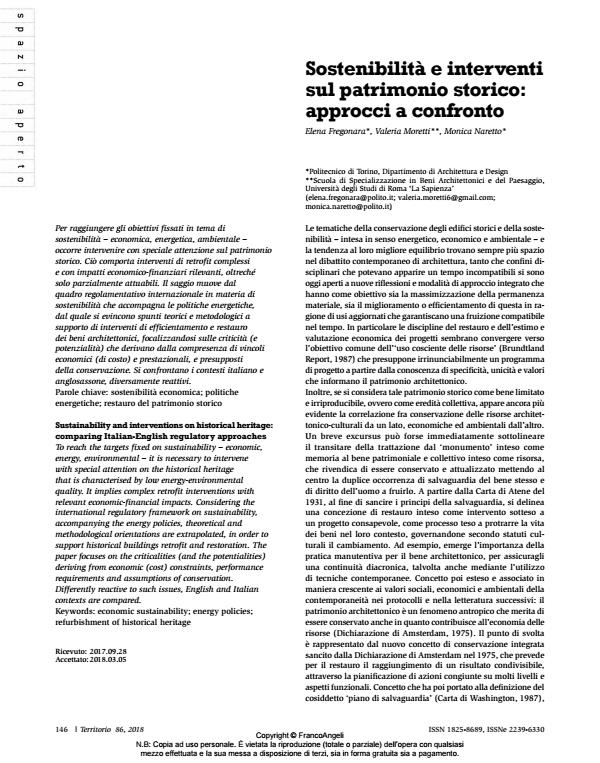Sustainability and interventions on historical heritage: comparing Italian-English regulatory approaches
Journal title TERRITORIO
Author/s Elena Fregonara, Valeria Moretti, Monica Naretto
Publishing Year 2019 Issue 2018/86
Language Italian Pages 11 P. 146-156 File size 1187 KB
DOI 10.3280/TR2018-086019
DOI is like a bar code for intellectual property: to have more infomation
click here
Below, you can see the article first page
If you want to buy this article in PDF format, you can do it, following the instructions to buy download credits

FrancoAngeli is member of Publishers International Linking Association, Inc (PILA), a not-for-profit association which run the CrossRef service enabling links to and from online scholarly content.
To reach the targets fixed on sustainability - economic, energy, environmental - it is necessary to intervene with special attention on the historical heritage that is characterised by low energy-environmental quality. It implies complex retrofit interventions with relevant economic-financial impacts. Considering the international regulatory framework on sustainability, accompanying the energy policies, theoretical and methodological orientations are extrapolated, in order to support historical buildings retrofit and restoration. The paper focuses on the criticalities (and the potentialities) deriving from economic (cost) constraints, performance requirements and assumptions of conservation. Differently reactive to such issues, English and Italian contexts are compared.
Keywords: Economic sustainability; energy policies; refurbishment of historical heritage
- Architectural Quality and the Housing Market: Values of the Late Twentieth Century Built Heritage Alice Barreca, in Sustainability /2022 pp.2565
DOI: 10.3390/su14052565
Elena Fregonara, Valeria Moretti, Monica Naretto, Sostenibilità e interventi sul patrimonio storico: approcci a confronto in "TERRITORIO" 86/2018, pp 146-156, DOI: 10.3280/TR2018-086019